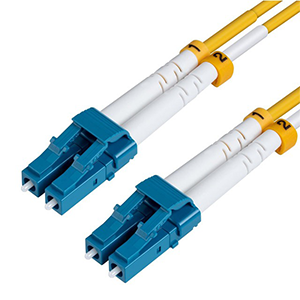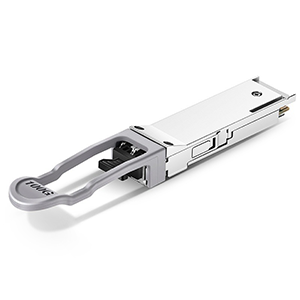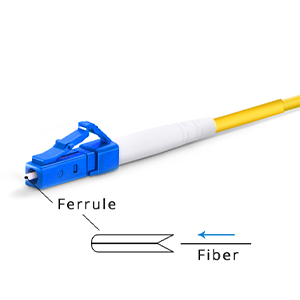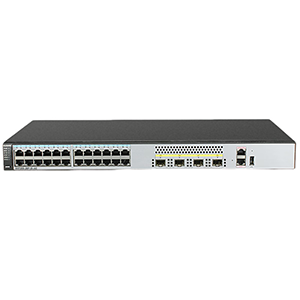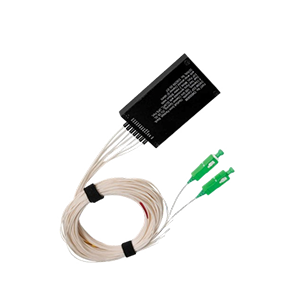In dense wavelength division multiplexing (DWDM) systems, erbium-doped fiber amplifiers (EDFAs) play a key role. This article will explore how to properly use EDFAs in DWDM systems. We will first explain the function of EDFAs in DWDM systems and explain how they help DWDM achieve high-capacity transmission.
Next, we will go into detail about the correct use of EDFAs in DWDM systems, including the proper selection of EDFA types, determining the appropriate location of EDFAs, setting EDFA key parameters, achieving reliable operation of EDFAs, and coordinating with other network elements in DWDM systems. We will emphasize the importance of each step to ensure that EDFAs perform at their best in DWDM systems. Finally, we will analyze the specific application methods and optimized use of EDFAs in different typical DWDM application scenarios.
The Role of EDFAs in DWDM Systems
Let me give you a detailed introduction to EDFAs (Erbium-Doped Fiber Amplifier, erbium-doped fiber amplifier) plays an important role in DWDM system:
Function of EDFA in DWDM system:
- EDFA is an optical signal amplifier that can amplify the power of each wavelength channel
- In DWDM system, EDFA can compensate for signal loss during optical fiber transmission
- Through the amplification of EDFA, the strength and quality of DWDM signals can be maintained during long-distance transmission
How EDFA helps DW DM system achieves high-capacity transmission:
- DWDM system can multiplex up to 80 or even more wavelength channels on one optical fiber
- These channels will generate a lot of signal attenuation and noise during transmission
- EDFA can effectively amplify these signals to maintain sufficient power levels
- Thus, DWDM system can maintain high-capacity and high-quality transmission performance during long-distance transmission
In short, EDFA plays a key role in DWDM system. It amplifies the optical power of each DWDM channel, compensates for the signal loss during optical fiber transmission, enables DWDM system to achieve long-distance, high-capacity optical transmission, and meet the growing network capacity requirements.
The correct use of EDFA
Let me introduce you in detail the correct use of EDFA in DWDM system:
Reasonable selection of EDFA type:
- EDFA can be divided into single-stage, double-stage, multi-stage and other types according to gain bandwidth and gain characteristics
- Different types of EDFA are suitable for different DWDM system capacity and distance requirements
- Choosing the right EDFA type can maximize the amplification requirements of the DWDM system
Determine the appropriate location of EDFA:
- EDFA should be placed at key locations of the optical fiber transmission link, such as relay stations, terminals, etc.
- The selection of EDFA location needs to consider factors such as optical fiber loss characteristics and the number of DWDM channels
- Reasonable layout of EDFA helps improve the transmission performance of DWDM systems
Set EDFA parameters:
- EDFA needs to adjust key parameters such as gain, noise factor, and saturated output power</ li>
- Parameter settings should be optimized according to the actual needs of the DWDM system
- Correctly setting EDFA parameters can maximize system performance
Reliable operation of EDFA:
- It is necessary to monitor the working status of EDFA and detect and handle faults in time
- Take appropriate preventive measures, such as temperature control, redundant backup, etc.
- EDFA reliability is the prerequisite for ensuring the stable operation of DWDM system
Coordination with other network elements:
- EDFA needs to be coordinated with the light source, multiplexer, demultiplexer and other network elements of the DWDM system
- Ensure that the parameters of each network element are consistent and the signal transmission is smooth
- Good coordination between network elements is conducive to the optimization of the overall performance of the DWDM system
In short, the correct use of EDFA requires consideration and optimization from multiple aspects such as selection, layout, parameter setting, reliability assurance and coordination with other network elements, so as to give full play to the role of EDFA in the DWDM system.
The use of EDFA in typical DWDM application scenarios
Let me introduce you to the use of EDFA in typical DWDM application scenarios:
Long-distance backbone network application:
- DWDM backbone network requires long transmission distance and many channels
- The reasonable arrangement of EDFA at the relay station can effectively compensate for the fiber transmission loss
- Select high-gain, low-noise EDFA models and optimize their parameter settings< /li>
- Ensure reliable operation of EDFA and improve the stability of the entire DWDM network
Metropolitan access network applications:
- Metropolitan DWDM networks need to take into account both transmission distance and channel density
- EDFA can be deployed near remote node devices to enhance signal power
- Optical transceiver modules with integrated EDFA can be used to simplify deployment
- Focus on optimizing EDFA noise characteristics to avoid affecting access quality
Data center interconnection applications:
- DWDM interconnection between data centers requires high bandwidth and low latency
- EDFA can be placed in the optical switch or integrated inside the OXC
- Optimize EDFA parameters to reduce power consumption and improve power efficiency
- Ensure EDFA reliability and support the continuity of data center services
Wireless backhaul applications:
- 5G and other wireless access networks require DWDM fiber backhaul links
- EDFA can be placed near 5G base stations to amplify wireless signals
- Consider the miniaturization and environmental adaptability requirements of EDFA
- Ensure that EDFA works in coordination with wireless equipment to improve transmission quality
In short, EDFA plays an indispensable and important role in typical application scenarios such as DWDM long-distance backbone networks, metropolitan area access networks, data center interconnection, and 5G wireless backhaul. According to the characteristics of different scenarios, it is necessary to reasonably select EDFA, optimize its parameters and layout, and ensure that EDFA can maximize the performance and reliability of the DWDM system.
Summary
EDFA is a key component for DWDM systems to achieve high-capacity transmission, and its correct use is crucial to system performance. Our company has long focused on the research and development and production of optical communication equipment and its key components, and has accumulated rich experience in DWDM system integration. We provide high-performance EDFA products that can easily meet your needs in various DWDM application scenarios such as data center interconnection, long-distance transmission trunks, and 5G bearer.
Our engineering team will provide you with professional EDFA selection guidance, installation and debugging, operation and maintenance optimization and other full-range support services to ensure that EDFA performs at its best in the DWDM system. At the same time, we can also provide consulting advice on the overall planning and optimization of the DWDM system to help you build a high-performance optical transmission network. Contact us now to learn more.
Using EDFA in DWDM systems FAQ
EDFAs are a crucial component in DWDM networks, as they can amplify multiple wavelength channels simultaneously, compensating for fiber optic signal attenuation and enabling longer transmission distances.
Important factors include the number of channels, the channel spacing, the desired gain and output power, the noise figure, and the compatibility with the specific DWDM wavelengths.
EDFAs are typically placed at strategic points along the fiber optic cable plant, taking into account factors such as the link budget, the required gain, and the need to maintain signal-to-noise ratio.
The input power to the EDFA should be within the recommended range, as both low and high input power levels can degrade the amplifier’s performance and the overall system performance.
Gain equalization techniques, such as the use of dynamic gain equalizers or gain-flattening filters, are often employed to ensure consistent gain across all the DWDM channels.
Important parameters include the output power, the gain, the noise figure, the optical signal-to-noise ratio (OSNR), and any signs of amplifier saturation or instability.
Techniques like channel power management, dispersion management, and the use of higher-order fiber types can help minimize the impact of nonlinear effects, such as stimulated Brillouin scattering and four-wave mixing.
Proper handling, cleaning, and connection of fiber optic components, as well as comprehensive testing and optimization of the EDFA parameters, are critical for ensuring reliable and efficient DWDM system operation.
Routine monitoring, performance testing, and proactive maintenance, including pump laser replacement and EDFA component cleaning, are essential for maintaining the long-term stability and performance of the DWDM system.
Ongoing advancements include the development of more efficient, higher-gain, and lower-noise EDFA designs, as well as the integration of EDFA functionality with other photonic components for more compact and integrated DWDM solutions.


